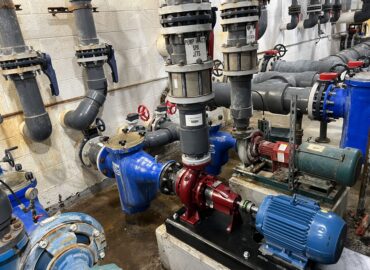Are you looking at getting your first pump for your home and business? While these are relatively simple pieces of hardware, it’s still important to understand your pumps and controls for them. Knowing how they operate, along with the basics of maintenance and operation, can help ensure you get many long years of productive life from your pump.
For decades, we’ve provided help and support for pumps and controls systems, so we know a lot about helping newcomers get started. Here are some of the most important things you should know.
The Basics of Pump Engineering
While pumps can be extremely complicated, especially for larger commercial models, a basic consumer-grade pump is actually a very simple device with only three major components.
- An intake pipe or mouth, which will generate suction and pull in liquid when the pump is in use.
- An impeller (like a propeller, but running in the opposite direction) creates the suction, and
- An outflow or drainage pipe then expels the liquid.
This is all kept in a single hard case, usually made of noncorrosive metal such as aluminum, along with a small electrical motor assembly for powering the impeller.
What’s on A Pump Control Panel?
Most pumps come with a small control panel which is used to regulate them, as well as keeping an eye on their performance. These panels can vary somewhat, but they still usually contain the following features:
- Temperature sensors, since overwork can potentially damage a pump – particularly if it’s pulling a thick or viscous liquid.
- Level sensors, letting you know if the amount of liquid within the pump ever runs too low.
- Flow sensors, which tell you how quickly fluid is moving through the pump.
- Pressure sensors, which measure the amount of internal stress.
- Overload warnings, which will trigger if something goes wrong with the pump and needs to be shut down to prevent damage.
The Most Important Maintenance Issues
On the whole, maintaining a pump is pretty easy. There are really only a few things to watch out for:
- Lubrication. The engine and impeller will need lubricants from time to time.
- Internal water levels. You should never allow your pump to run dry.
- Heat. A pump that is straining will quickly build up heat, damaging it.
If you have other maintenance issues with your pump, FloRight Pump & Controls can help. Please contact us with your questions or concerns.

